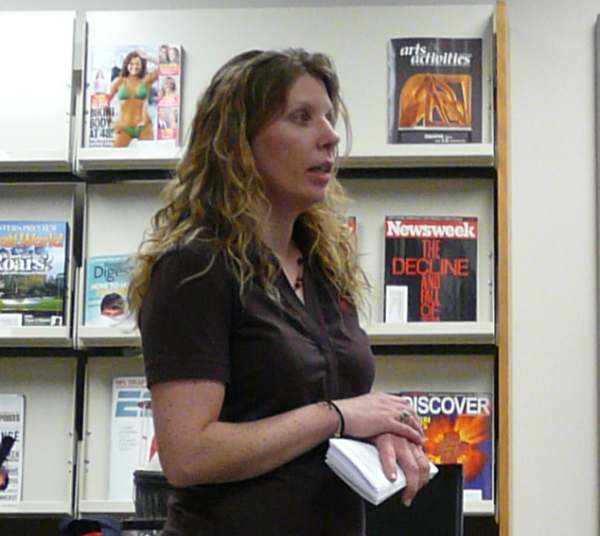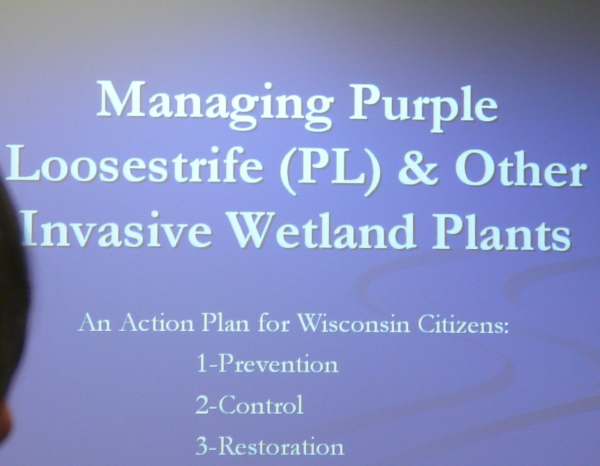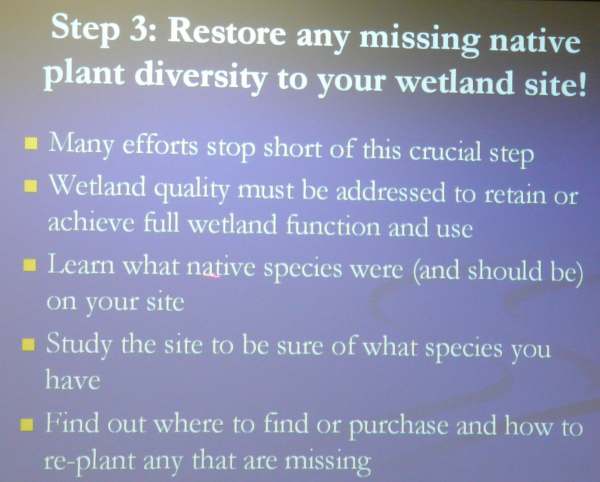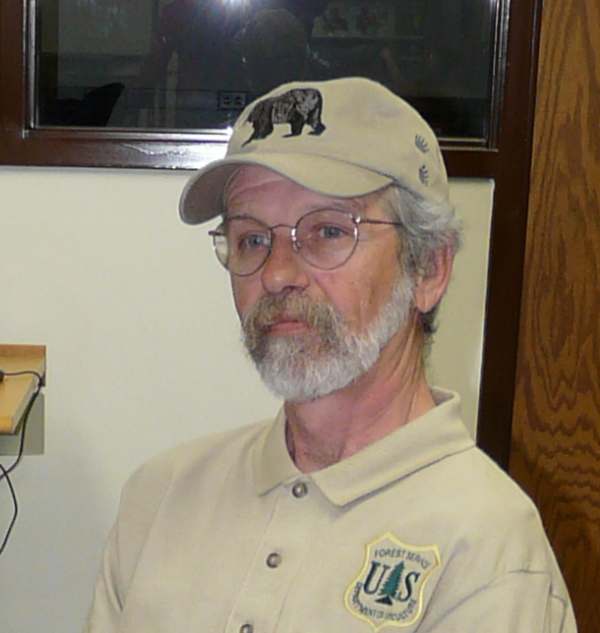

| Return to Main Page |
|
Hurley Students |
 |
| The Wisconsin DNR conducted a workshop yesterday at the Hurley K-12 school. The workshop was aimed at eradication of Purple Loosestrife an invasive plant through the use of volunteers. |
| The audience consisted of students from Diane Oikrongly's Biology class. The Sophmore and Junior students will then pass on what they have learned to the fourth grade students. Other interested members of the community also attended the workshop, including members of the Range Master Gardeners. |
 |
| The program was brought to the School through the efforts of Heather Palmquist (picturedabove) the Iron County, Aquatic Invasivie, Species Coordinator and Mary Jo Gingras (pictured below)of the Conservation Department. |
 |
| The lecture was conducted by Brock Woods (pictured above) Brock is a biologist from the Wisconsin DNR, and is known to be the state's foremost expert on invasive plants. |
 |
| His presentation was very informative. Brock stated that seventy five percent of invasive plants exists on private land. His presentation was aimed at the students, hoping to instruct them on the raising and releasing beetles that will control the Purple Loosestrife. |
| Purple Loosstrife is a very serious problem in our area and
throughout the entire United States. It came to our shores from
Europe by several means. Not being a native plant it has no natural
predators or diseases to keep it under control. It grows faster and
taller than our native plants, out competes them reduces dependent
animals. It is quick to reproduce and spread, mostly with lots of
seeds, so it can eventually invade everywhere. As a consequence it
has thrived to the point of pushing out native plants. |
 |
| Brock Woods' plan for managing Purple Loosestrife and other
Invasive wetland plants. 1- Prevention 2- Control 3-Restoration |
 |
| Step one is identifying the problem, making a commitment to do something about it networking with others to solicit help. |
 |
| Step two is the control step, which will depend on the nature and scope of the problem. |
| A recent development in control methodology has been the
introduction of Biological Control: A Long-Term Solution Biocontrol uses one organism to control another. European insects that feed exclusively on purple loosestrife were tested and imported because North American insects cannot control purple loosestrife. Biocontrol in Wisconsin began in 1994 with the release of two small, brown beetle species (G. pusilla and G. calmariensis ) that eat its leaves. Root and flower feeding weevils came a year later. Monitoring for over 10 years has ensured that these insects pose no threat to either crop plants or native flora, and do not bother people. The foliage beetles can cause dramatic reductions in local purple loosestrife in a few years and the WDNR and UWEX have created a program for citizens to locally raise and release these beetles. Hundreds of citizens have already raised millions of beetles, representing over 90% of all beetles released in Wisconsin to date! Every person with uncontrolled purple loosestrife nearby should consider joining . this effort. Purple loosestrife can never be eliminated from Wisconsin, but a natural balance may be restored using bio control. |
 |
| Mr Woods told his audience that many efforts to restore a site fail due to a lack of a good site plan. A plan should be made as to what the wetland site is to look like after the invasive species has been eradicated. Lack of a restoration plan could result with one invasive being replaced by another. |
 |
 |
| pictured above is Ottawa Forest Biologist Jeff Soltesz, who was on hand if there were any questions pertaining to Michigan. According to Jeff similar control programs are ongoing in Michigan. |
|
IronwoodInfo.com is a Michigan, Non-Profit Media Corporation |
|
Contact IronwoodInfo.com |
|
email:
mail@ironwoodinfo.com |